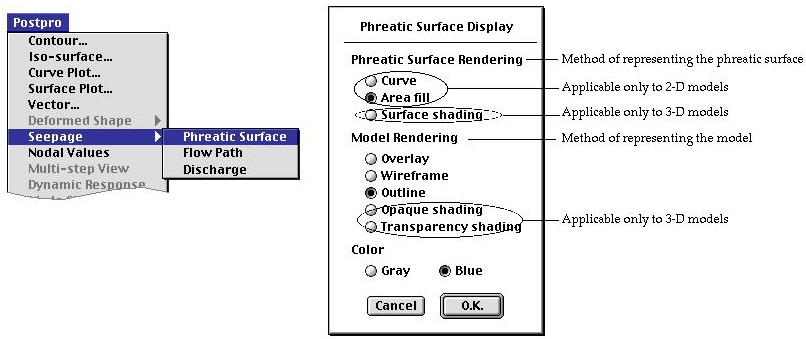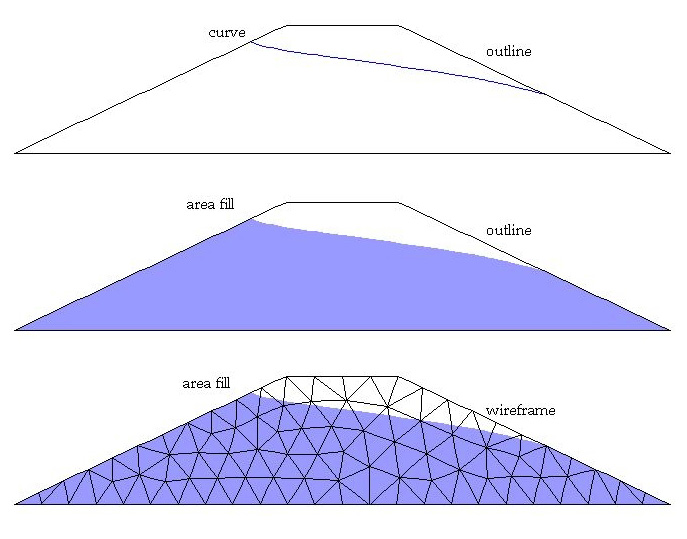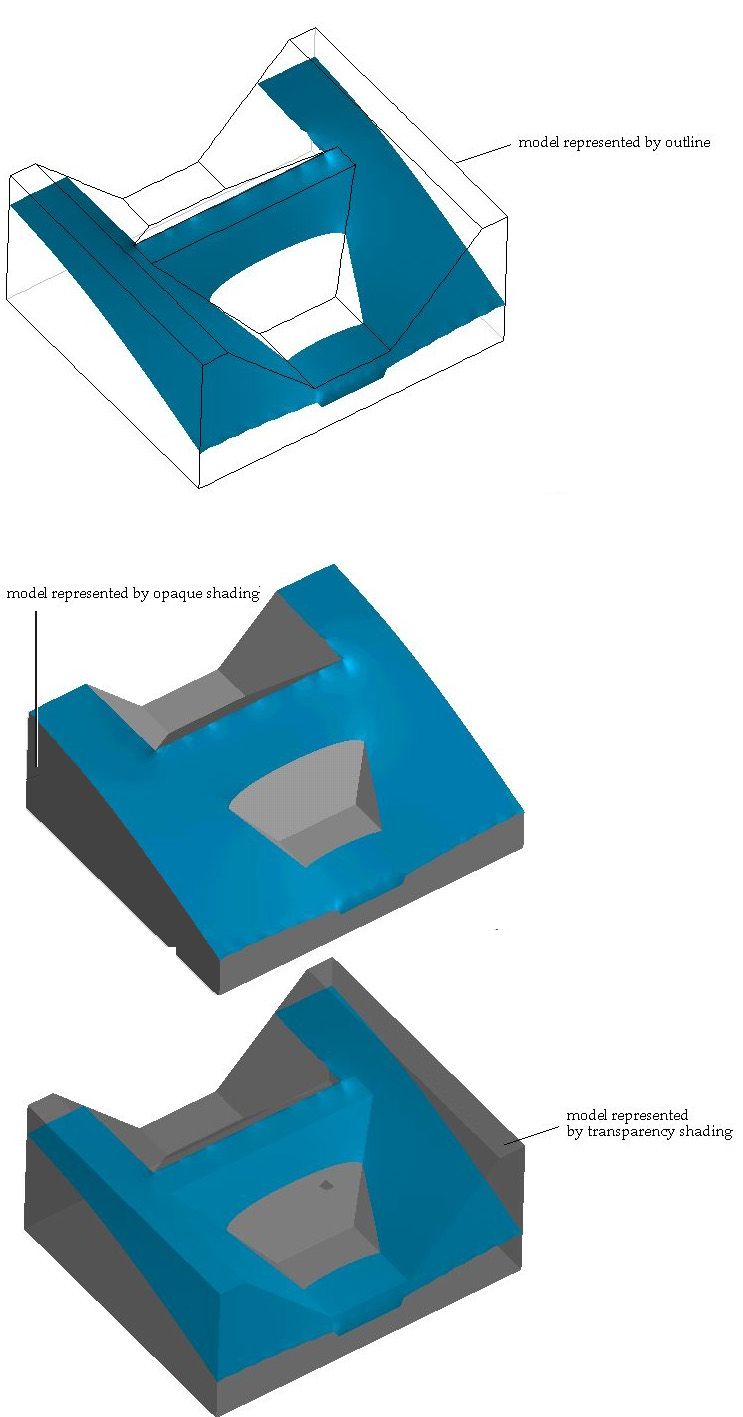![]()
| Postprocessing of Continuum Analysis > Visualization of Seepage Analysis Data > Vesualization of phreatic surface |
|
|
|
|
||
Visualization of phreatic surface
The phreatic surface is one of the most informative and useful data obtained from unconfined seepage analysis. The phreatic surface is represented by a curve in plane and axisymmetric analysis, and by a surface in 3-D seepage analysis.
> Rendering of phreatic surface in 2-D seepage analysis
The phreatic surface is represented by a curve in plane or axisymmetric analysis. There are a number of options for rendering the phreatic surface which can be set by the following procedure.
|
1) Select "Phreatic surface" item from "Seepage"
submenu of |
||
|
"Phreatic Surface Display" dialog opens. Set the options related to rendering of the phreatic surface. |
||
 |
||
|
2) Set the "Phreatic Surface Rendering" option. |
||
|
The phreatic surface can be represented either by line(curve) drawing or by area fill. There are 3 items of this option, but only 2 items, "Curve" and "Area fill" are enabled for plane or axisymmetric seepage analysis. The other one is used only for 3-D volume seepage analysis. |
||
|
3) Set the "Model Rendering" option. |
||
|
There are also options related to how the finite element model is rendered together with the phreatic surface. There are 5 items for this option, but only 3 items are enabled. The other one is used only for 3-D seepage analysis. |
||
|
- "Overlay" : The phreatic surface is drawn over the current screen image. |
||
|
- "Wireframe" : The wireframe mesh of the model is drawn. |
||
|
- "Outline" : The outline of the model is extracted and drawn. |
||
|
- "Opaque shading" : A part of the model is rendered by shading. This option is applicable only to 3-D model. |
||
|
- "Transparent shading" : The boundary of the model is rendered as transparent objects. This option is applicable only to 3-D model. |
||
|
4) Set the "Color" option. |
||
|
The rendering color of the phreatic surface can be selected from blue and gray. |
||
|
5) Click |
||
|
"Phreatic Surface Display" dialog closes, and the phreatic surface is rendered in accordance with the option setting. |
||

<Comparison of options for rendering of phreatic surface>
> Rendering of the phreatic surface in 3-D seepage analysis
The phreatic surface is re p resented by a surface in 3-D seepage analysis. The p h reatic surface is rendered in the form of iso-surface. Thus, phreatic surface rendering for 3-D analysis usually takes much longer time than 2-D analysis.
The rendering options are set by the same procedure as 2-D seepage analysis. There is no choice of phreatic rendering method other than "Surface shading." The finite element model can be rendered in various forms selectable from model rendering options in "Phreatic Surface Display" dialog.

< Rendering of phreatic surface in 3-D seepage analysis >
|
|
|
|